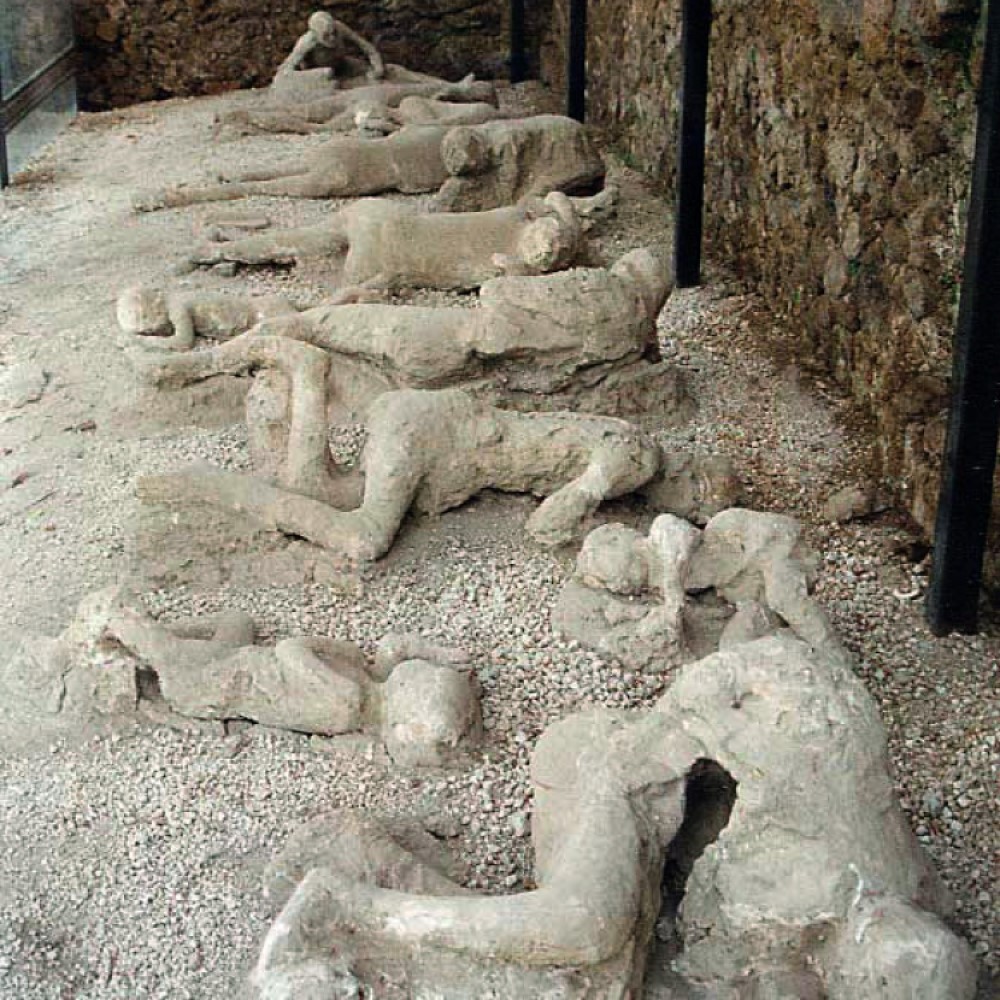
DNA analysis unveils new information about Pompeii victims
On Nov. 7, 2024, a team of scientists announced that DNA analysis of Pompeii victims who perished during the eruption of 79 CE In Italy were not who we thought they were.
The eruption preserved the forms of many of the dying as the ash compacted around their bodies. Although the soft tissue decayed, the outlines of the bodies remained and were recovered by excavators over the the last century filling the cavities with plaster. The researchers then generated genome-wide ancient DNA and strontium isotopic data from bone material embedded in the casts to characterize the genetic relationships, sex, ancestry, and mobility of five individuals.
The DNA analysis revealed that the individuals’ sexes and family relationships do not match historical interpretations. For example, an adult wearing a golden bracelet with a child on their lap—often interpreted as mother and child—is genetically an adult male biologically unrelated to the child. Similarly, a pair of individuals who were thought to have died in an embrace—often interpreted as sisters—included at least one genetic male.
Tags:
Source: Cell
Credit: Photo: Casts of the corpses of a group of human victims of the 79 AD eruption of the Vesuvius, found in “Garden of the fugitives” in Pompeii, Italt. Courtesy: Wikipedia.
